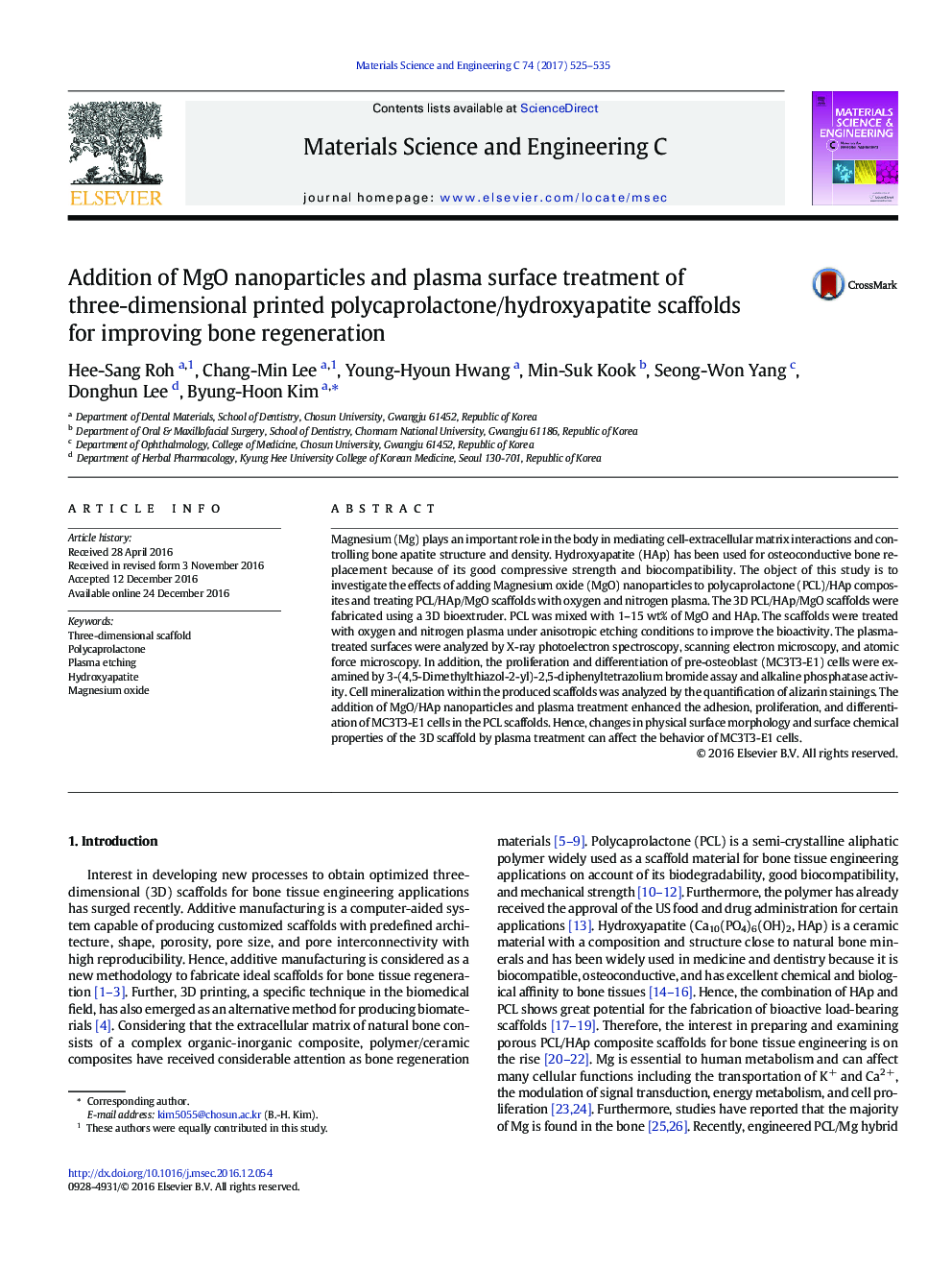| Article ID | Journal | Published Year | Pages | File Type |
|---|---|---|---|---|
| 5435055 | Materials Science and Engineering: C | 2017 | 11 Pages |
â¢3D-printed PCL/HAp/MgO showed good porosity and interconnectivity.â¢O2 and N2 plasma improved the surface roughness and hydrophilicity on scaffolds.â¢Addition of HAp/MgO nanoparticles enhanced the cell behavior of preosteoblast.
Magnesium (Mg) plays an important role in the body in mediating cell-extracellular matrix interactions and controlling bone apatite structure and density. Hydroxyapatite (HAp) has been used for osteoconductive bone replacement because of its good compressive strength and biocompatibility. The object of this study is to investigate the effects of adding Magnesium oxide (MgO) nanoparticles to polycaprolactone (PCL)/HAp composites and treating PCL/HAp/MgO scaffolds with oxygen and nitrogen plasma. The 3D PCL/HAp/MgO scaffolds were fabricated using a 3D bioextruder. PCL was mixed with 1-15Â wt% of MgO and HAp. The scaffolds were treated with oxygen and nitrogen plasma under anisotropic etching conditions to improve the bioactivity. The plasma-treated surfaces were analyzed by X-ray photoelectron spectroscopy, scanning electron microscopy, and atomic force microscopy. In addition, the proliferation and differentiation of pre-osteoblast (MC3T3-E1) cells were examined by 3-(4,5-Dimethylthiazol-2-yl)-2,5-diphenyltetrazolium bromide assay and alkaline phosphatase activity. Cell mineralization within the produced scaffolds was analyzed by the quantification of alizarin stainings. The addition of MgO/HAp nanoparticles and plasma treatment enhanced the adhesion, proliferation, and differentiation of MC3T3-E1 cells in the PCL scaffolds. Hence, changes in physical surface morphology and surface chemical properties of the 3D scaffold by plasma treatment can affect the behavior of MC3T3-E1 cells.
Graphical abstractDownload high-res image (107KB)Download full-size image
